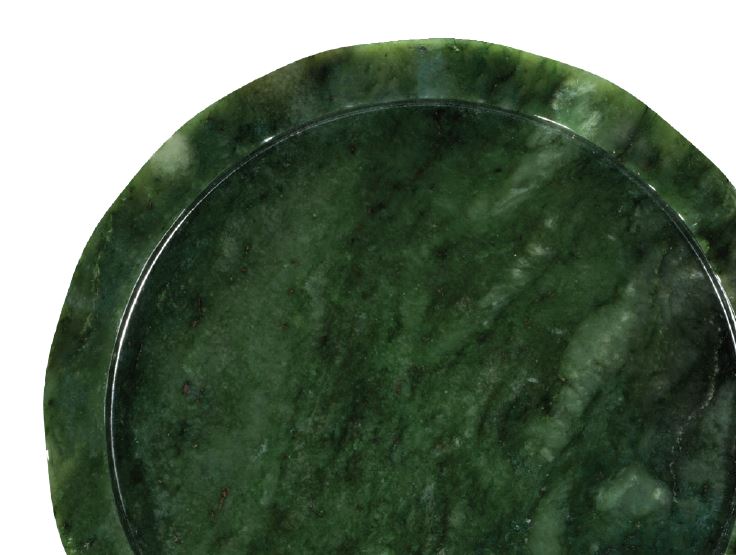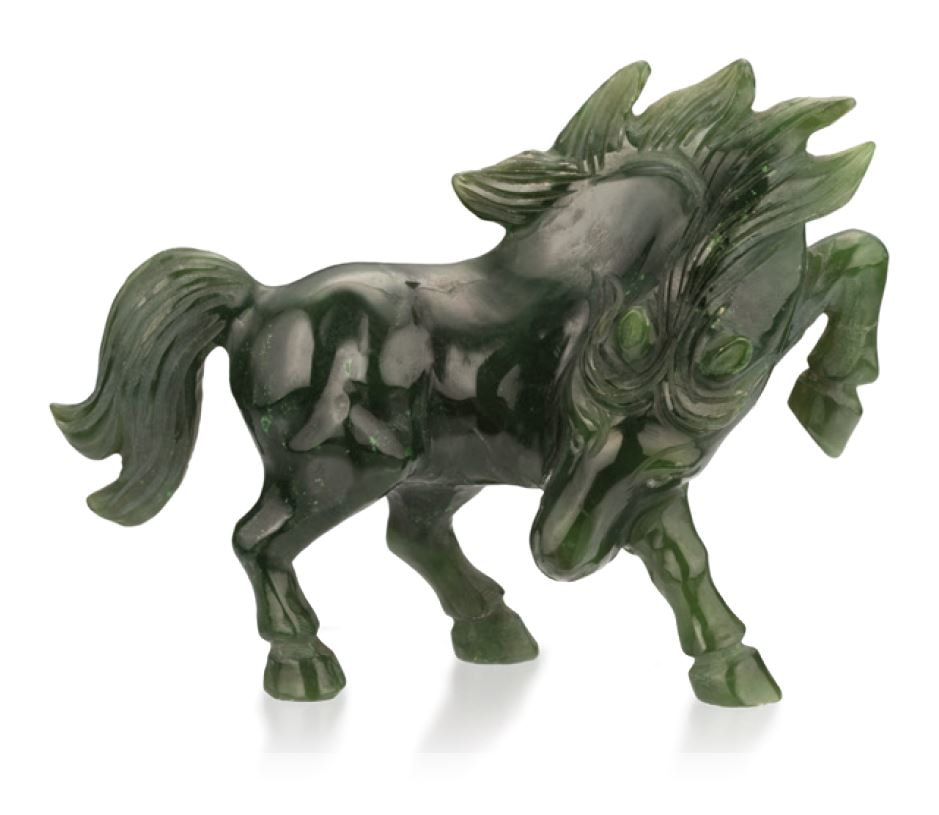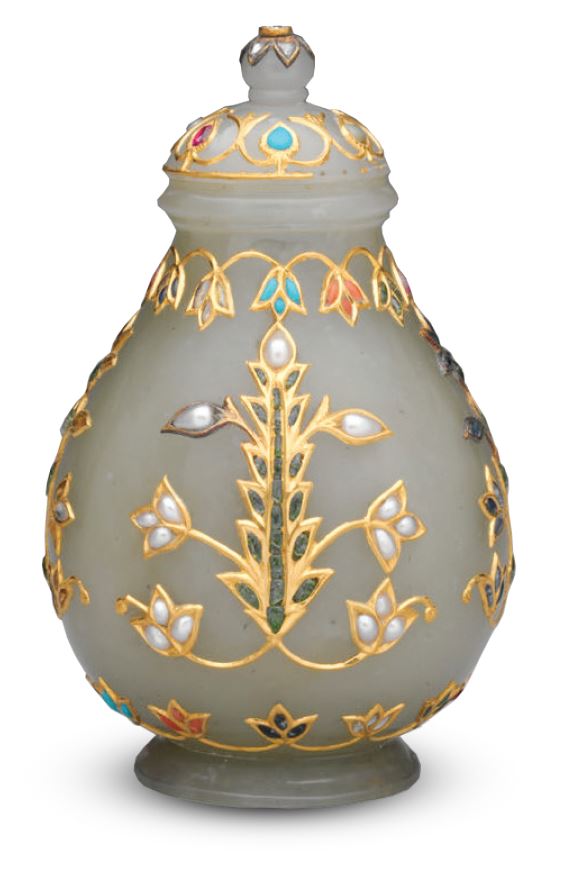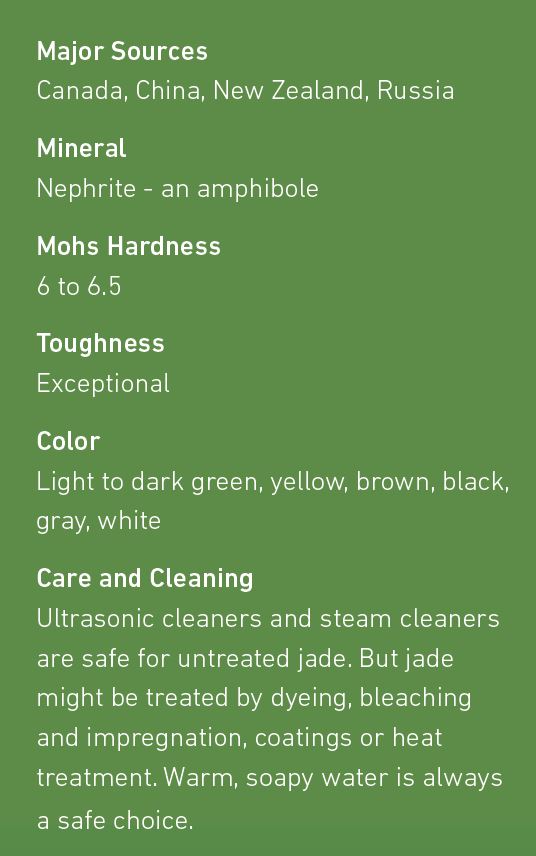Nephrite JadeNephrite symbolizes a connection between the living and the dead as well as power, wealth and elevated social class. Discovered in China around 5000 BCE nephrite jade continues
to be treasured worldwide. The name jade comes from the Spanish “piedra de ijada,” which means stone of the loins. This is due to the belief that it could cure ailments of the kidneys. The alternate phrase, “piedra de riñones,” translates to “lapis nephriticus” in Latin, which was the root of the word nephrite. The Chinese called this stone “Yu” which could refer to any green stone that possessed the “virtues of Yu.” According to Confucius, these virtues included a compact and fine texture, extreme toughness and high hardness, and a smooth and glossy luster. Due to its interlocking fibrous structure, nephrite is the toughest gemstone known. This toughness is why nephrite was often used to fashion tools. Color Nephrite jade is a member of a group of related minerals called
amphiboles. Its colors are green, black and a creamy white that the Chinese call “mutton fat.” The “mutton fat” is the most desirable type of nephrite jade and is highly sought after by collectors. The green of nephrite is sometimes referred to as a “spinach” green. Transparency Nephrite is translucent to opaque. It is never transparent
or even semi-transparent. The fibrous structure is the reason for nephrite’s extreme toughness and also contributes to its opacity. Source Nephrite has been mined in China for thousands of years.
It is also found in Russia, Canada and New Zealand. Russia and Canada are the largest suppliers of nephrite in the world market today. New Zealand is also an important source where the Maori refer to it as pounamu. Pounamu is considered treasure and plays a very important role in the Maori culture. Treatments Carvings made of nephrite jade are often rubbed with wax
to improve the surface luster. Other than that, nephrite is seldom treated. It is possible for it to be dyed or impregnated but this is rare. |
The carving of nephrite has a history
that goes back thousands of years. Carved nephrite (jade) jar with cover with gold and stone inlays. Dated 18th-19th century Mughal period (1526-1858) or Qing dynasty (1644-1911), India.
|
All information are courtesy of Gemological Institute of America (GIA). OR DIAMOND are not affiliated with, connected to, or associated with GIA other than selling diamonds and gemstones graded by GIA and have GIA trained staff gemologist and accredited jewelry professional on site.
Images courtesy: Cenki Thomas; Gerry Manning, Manning International; W. Constantin Wild & Co., Idar-Oberstein, Germany





